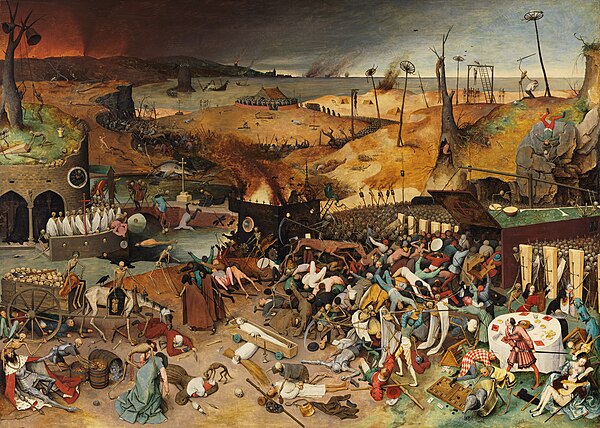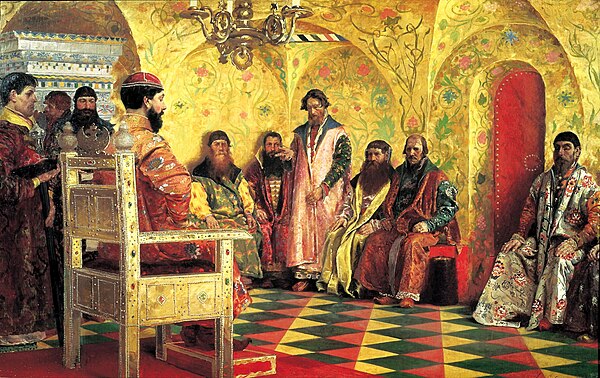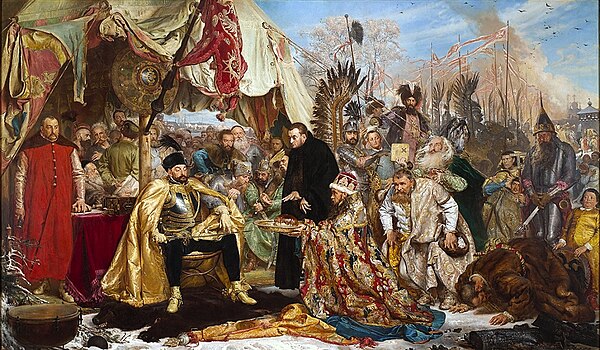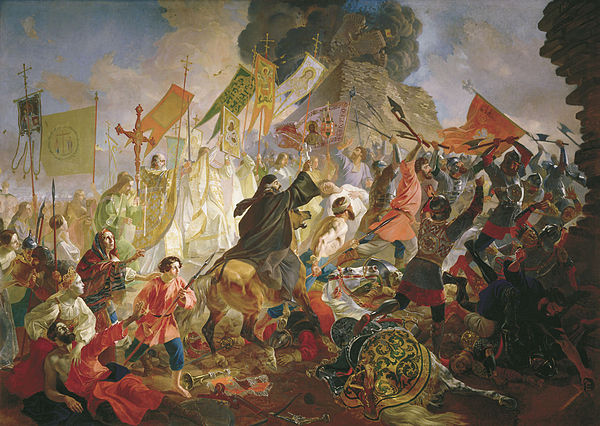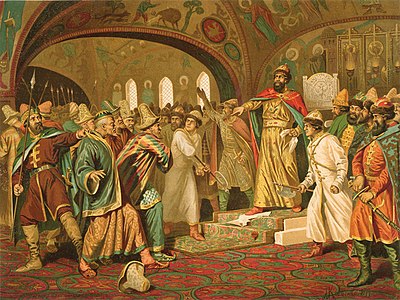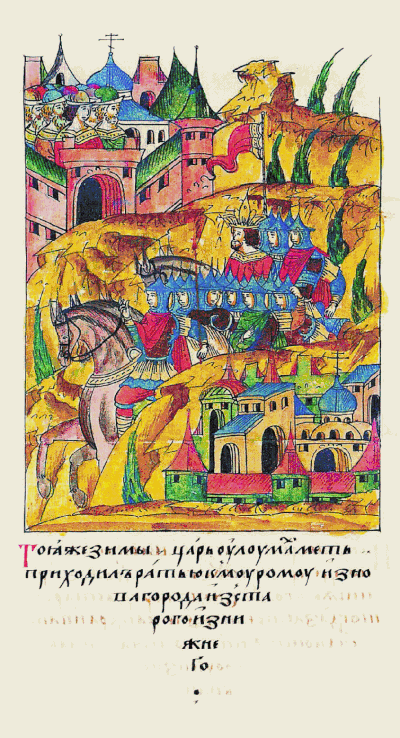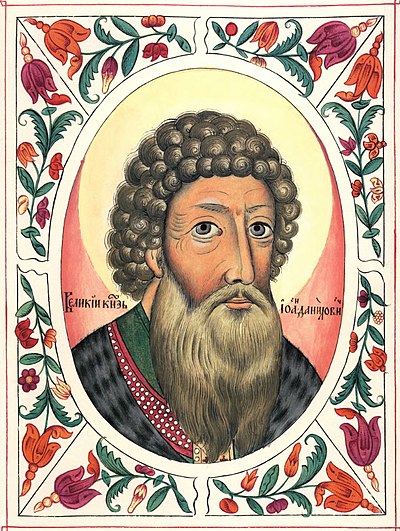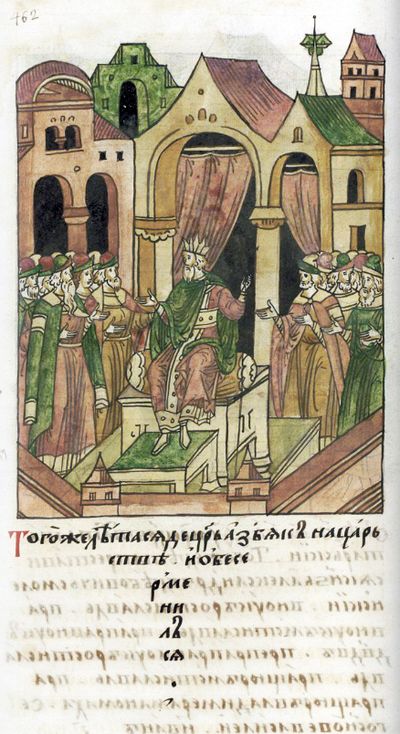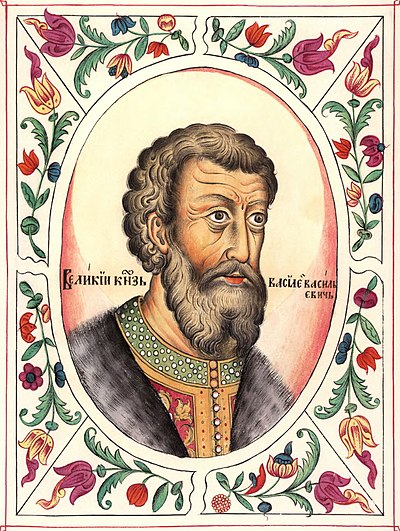
Grand Duchy of Moscow
The Grand Duchy of Moscow was a Rus' principality of the Late Middle Ages centered on Moscow, and the predecessor state of the Tsardom of Russia in the early modern period. It was ruled by the Rurik dynasty, who had ruled Rus' since the foundation of Novgorod in 862. Ivan III the Great titled himself as Sovereign and Grand Duke of All Rus'.
The state originated with the rule of Alexander Nevsky of the Rurik dynasty, when in 1263 his son Daniel I was appointed to rule the newly created Grand Principality of Moscow, which was a vassal state to the Mongol Empire (under the "Tatar Yoke"), and which eclipsed and eventually absorbed its parent duchy of Vladimir-Suzdal by the 1320s. It later absorbed its neighbors including the Novgorod Republic in 1478 and the Principality of Tver in 1485, and remained a vassal state of the Golden Horde until 1480, though there were frequent uprisings and successful military campaigns against the Mongols, such as the war of Dmitri Donskoy in 1380.
Ivan III further consolidated the state during his 43-year reign, campaigning against his major remaining rival power, the Grand Duchy of Lithuania, and by 1503 he had tripled the territory of his realm, adopting the title of tsar and claiming the title of "Ruler of all Rus'". By his marriage to Sophia Palaiologina, niece of Constantine XI Palaiologos, the last Byzantine emperor, he claimed Muscovy to be the successor state of the Roman Empire, the "Third Rome". The immigration of Byzantine people influenced and strengthened Moscow's identity as the heir of Orthodox traditions. Ivan's successor Vasili III also enjoyed military success, gaining Smolensk from Lithuania in 1512 and pushing Muscovy's borders to the Dnieper. Vasili's son Ivan IV (later known as Ivan the Terrible) was an infant upon his father's death in 1533. He was crowned in 1547, assuming the title of tsar together with the proclamation of the Tsardom of Russia.











